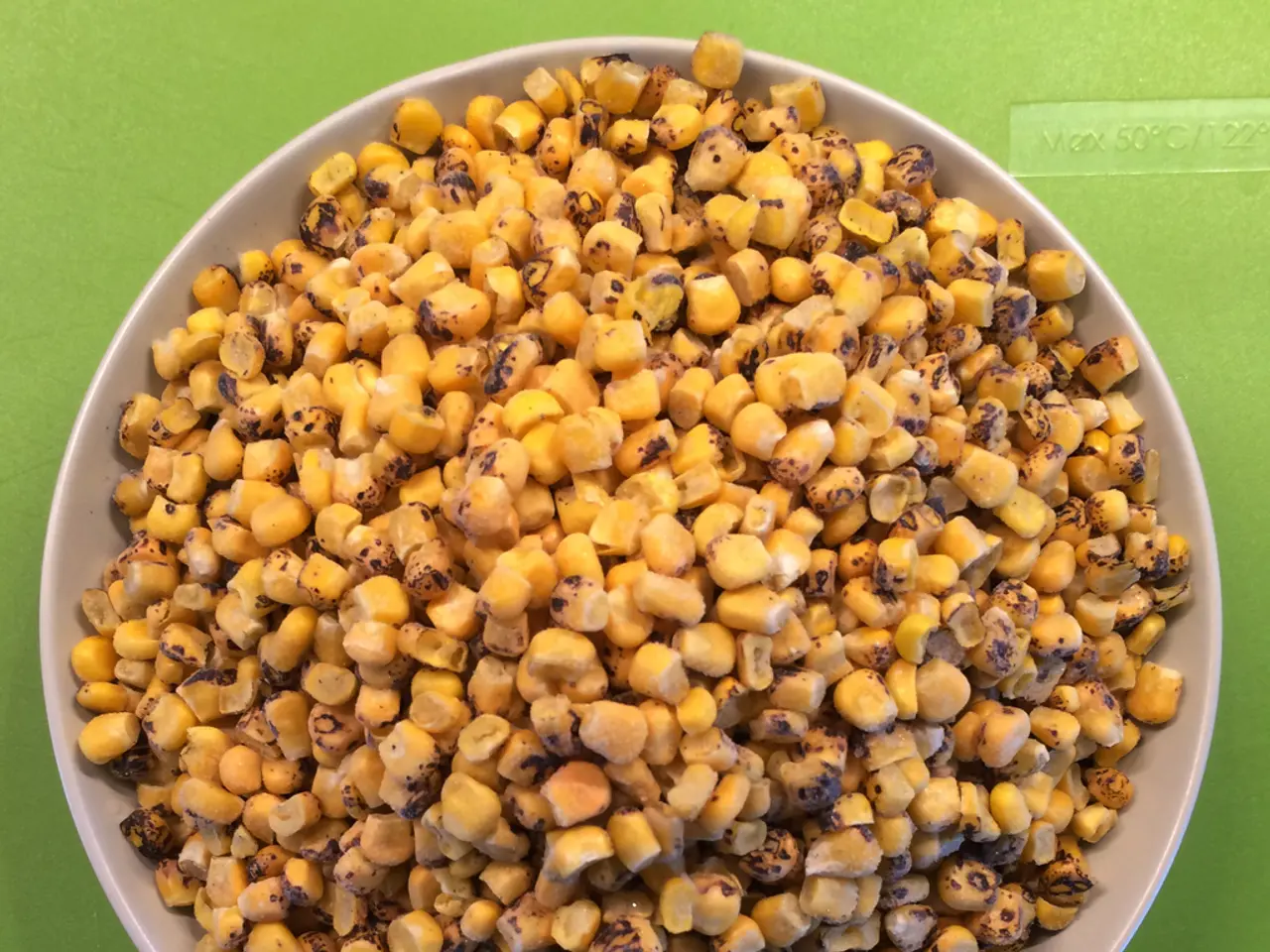Nurturing Sweet Corn in Your Personal Backyard
Growing sweet corn can be a rewarding experience for home gardeners, but it requires understanding optimal soil conditions, temperature, and managing common pests like raccoons and Japanese beetles. Here are best practices for different scenarios:
Best Practices for Growing Sweet Corn
Soil Temperature and Type
- Optimal Temperature: Sweet corn grows best in soil with a temperature between 55°F and 85°F (13°C to 30°C). It does not germinate well in cold soil[1].
- Soil Type: Corn prefers well-draining, fertile soil with a pH between 6.0 and 7.0. It can benefit from organic matter like compost to improve soil structure and fertility[1].
Planting Strategies
- Planting Depth: Plant seeds about 1 inch deep and 6 to 8 inches apart in rows that are 3 feet apart[1].
- Moisture: Keep the soil consistently moist but not waterlogged, as corn requires a lot of moisture to grow[1].
Managing Pests and Pests
Raccoons
- Use Barriers: Protect your corn by using fencing or other barriers to deter raccoons. Fencing should be at least 3 feet high and extend 12 inches below ground to prevent digging[2].
- Crop Protection: Cover plants with row covers to prevent raccoons from accessing them.
- Appreciate Their Role: Consider their beneficial role in pest control, as they can reduce garden pests like grubs and slugs[2].
Japanese Beetles
- Hand Pick: Regularly inspect plants and manually remove beetles to prevent damage.
- Use Traps: Utilize Japanese beetle traps to capture and remove them.
- Biological Controls: Encourage natural predators or biological controls like milky spore powder to control beetle larvae.
- Pesticide Use: As a last resort, use targeted insecticides to control severe infestations.
Additional Pest Management
- Crop Diversity: Plant a diverse range of crops to attract beneficial insects that can help control pests.
- Companion Planting: Some plants, like marigolds, can deter nematodes and other pests beneficial to corn growth.
Harvesting and Storing Sweet Corn
- Harvesting: Sweet corn should be harvested at the milk stage, when the silks are brown and dry at the ear tip and puncturing the kernels produces a milky juice.
- Storage: The optimum storage conditions for sweet corn are a temperature of 32°F and a relative humidity of 95%.
Variety Selection and Planting Schedule
Home gardeners can choose from numerous sweet corn varieties, including standard sugary (su), sugary enhanced (se), supersweets (sh2), synergistic (syn) and augmented supersweets (shA or aug). Different types of sweet corn should be isolated from each other to prevent cross-pollination. For a continuous supply of sweet corn, plant early, mid-season and late cultivars.
Pest Management for Corn Smut
Planting resistant varieties is the most effective management strategy for corn smut. Early scouting, good crop rotation, removing galls before they spread their spores, and avoiding overhead irrigation are techniques to manage corn smut. Most modern hybrids of sweet corn are resistant to corn smut.
Baby Corn Production
Most baby corn is actually grown from regular sweet and field corn varieties. The ears of baby corn are harvested when they are 2 to 4 inches in length and 1/3 to 2/3 inch in diameter at their base.
Conclusion
Growing sweet corn requires attention to soil conditions, careful planting, and effective pest management. By understanding the benefits and challenges of common garden visitors like raccoons and implementing strategies to manage pests like Japanese beetles, you can optimize your corn yield.
[1] University of Illinois Extension. (n.d.). Sweet Corn Production. Retrieved from https://extension.illinois.edu/agriculture/crops/sweet-corn-production/
[2] Iowa State University Extension and Outreach. (n.d.). Raccoons. Retrieved from https://extension.iastate.edu/humansciences/raccoons
- For a healthy growth of plants such as sweet corn in the home garden, it's essential to maintain soil with temperatures between 55°F and 85°F and a pH between 6.0 and 7.0, as well as protecting them from pests like raccoons and Japanese beetles.
- Corn plants thrive in well-draining soil enriched with organic matter, which improves soil structure and fertility, while keeping the soil consistently moist but not waterlogged can promote growth.
- To deter raccoons from damage, home gardeners can use fencing or other barriers that are at least 3 feet high, extend 12 inches below ground, and cover plants with row covers can further protect them from these critters.
- When it comes to managing Japanese beetles, regular inspection and manual removal of beetles can help prevent damage, while using targeted insecticides as a last resort should be considered for severe infestations. It's also beneficial to encourage natural predators or biological controls such as milky spore powder to maintain the balance of garden ecosystems.








